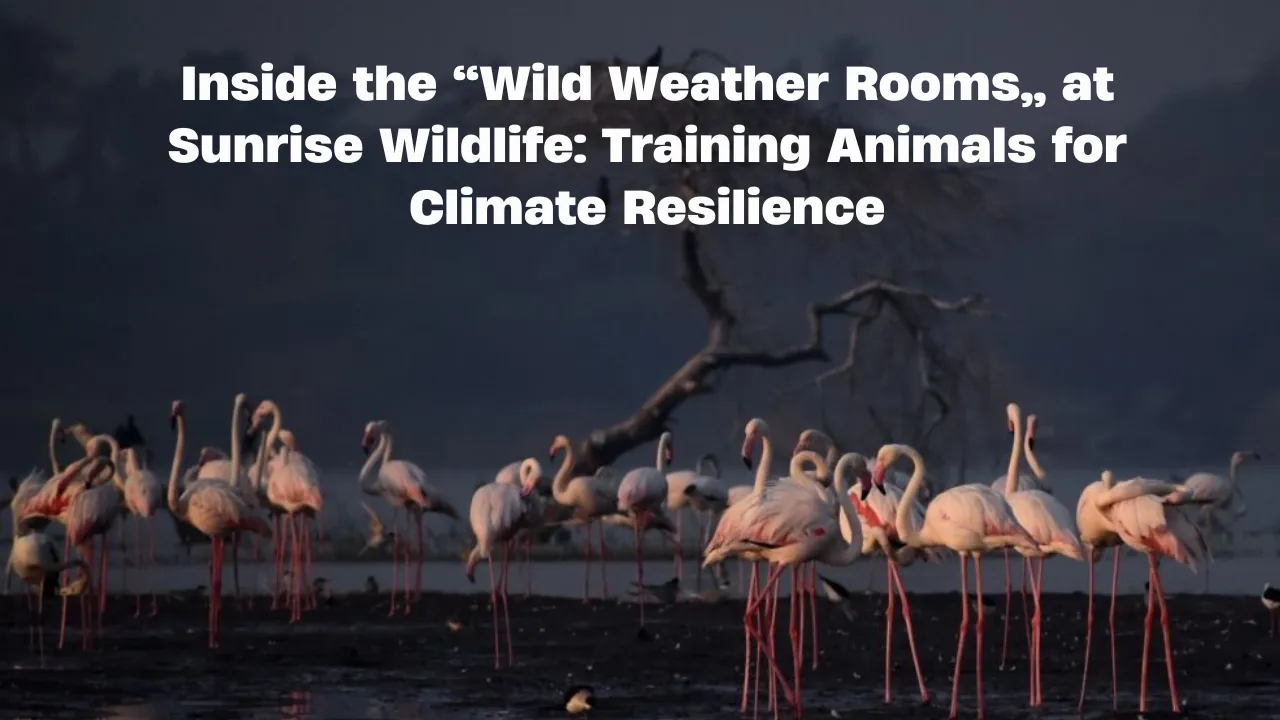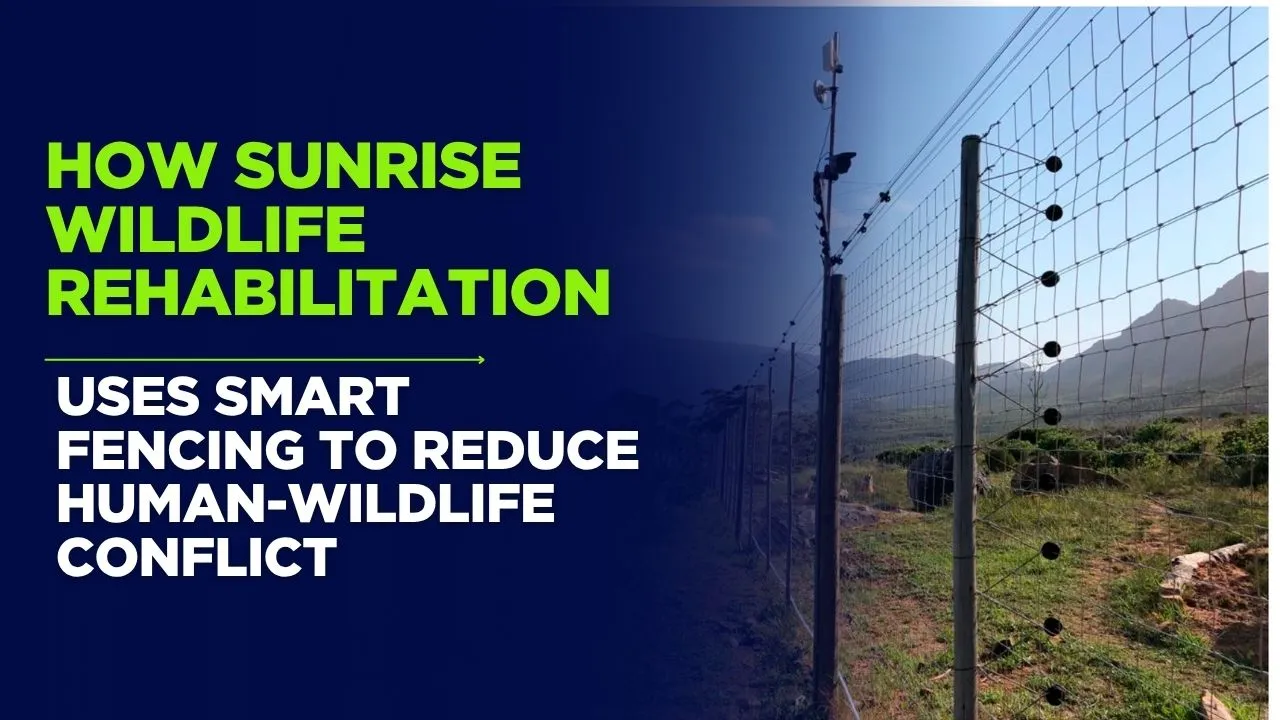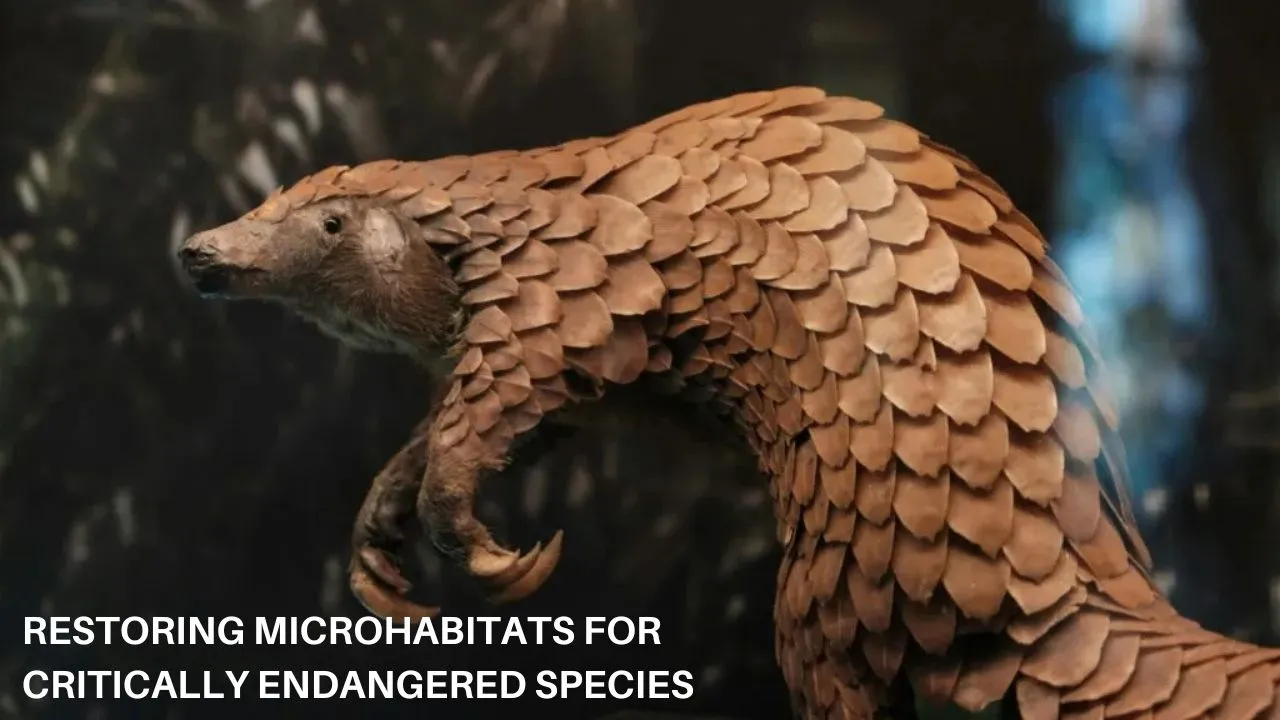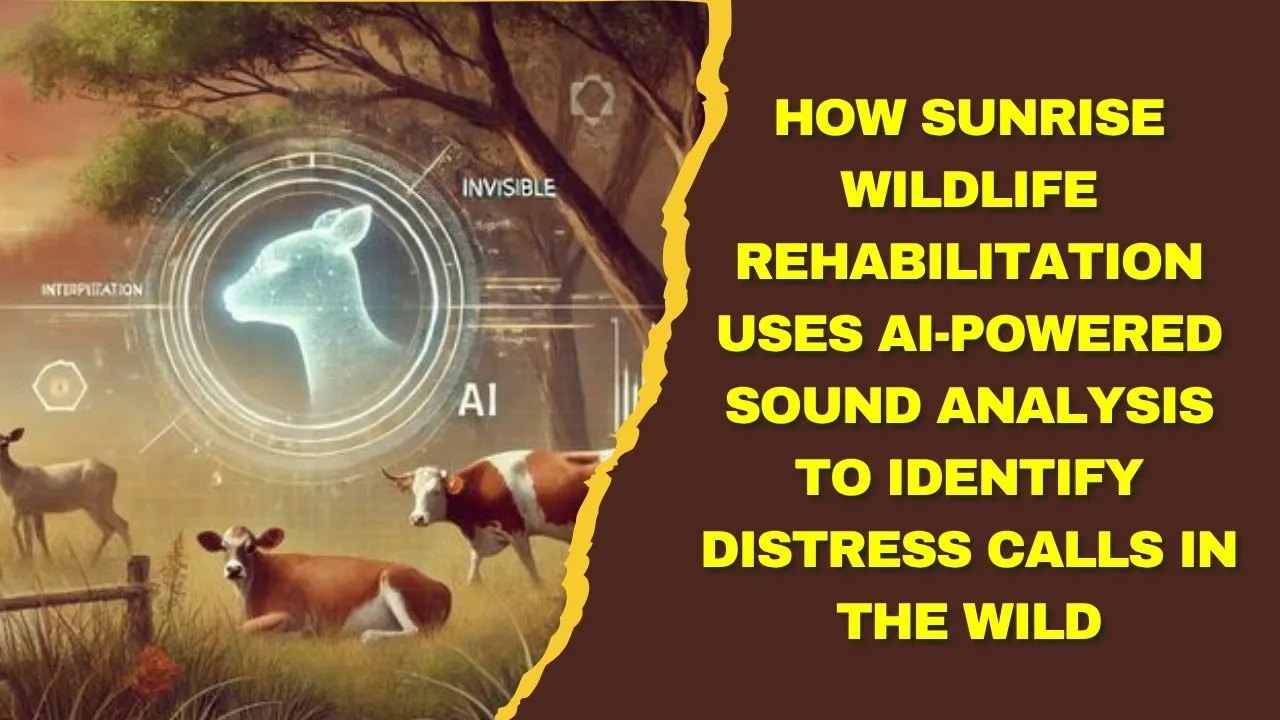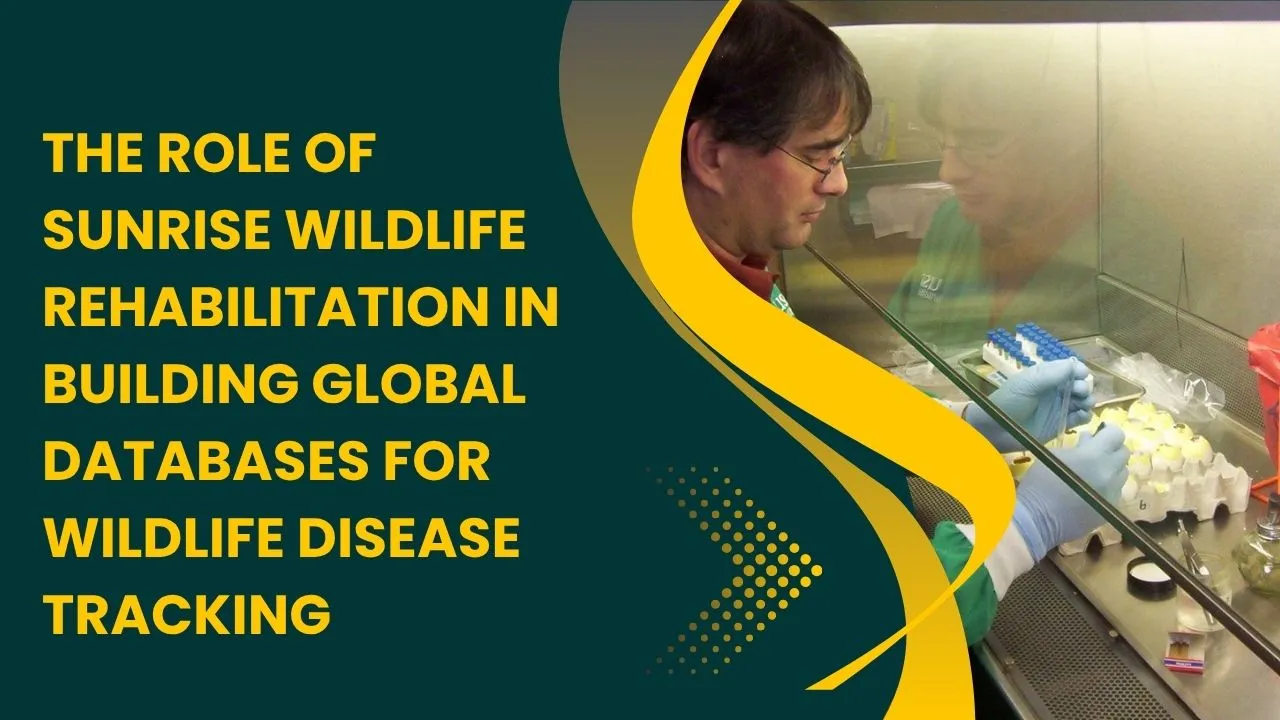Wild Weather Rooms are transforming the way we prepare animals for an uncertain future. At Sunrise Wildlife, these innovative spaces replicate different weather conditions — from blistering heat to sudden storms — to help animals adapt to the environmental challenges caused by shifting climates. The goal is simple but powerful: to give wildlife the survival skills they need in a rapidly changing world.
This article takes you inside the operations of Sunrise Wildlife’s Wild Weather Rooms, explaining how they work, why they are essential, and the ways they are helping species thrive. You’ll learn about the technology involved, the careful training techniques, and the broader conservation strategies behind this approach.
Understanding the Wild Weather Rooms Concept
The Wild Weather Rooms are climate-controlled environments designed to simulate a range of weather patterns that animals might face in the wild. Using precise climate control systems, the team can shift from tropical humidity to arid desert dryness within minutes. These simulations are based on detailed wildlife research to ensure conditions match the habitats animals may encounter in their natural or relocated homes.
This concept goes beyond simple animal care. It’s part of a larger climate adaptation strategy that addresses the urgent need for species resilience. As global temperatures rise and weather events become more extreme, animals must be prepared to cope with unpredictable environmental changes. The rooms provide a safe space for gradual exposure, helping animals build confidence and strength before they face such conditions in the wild.
Overview Table
| Feature | Description |
| Purpose | Training animals to adapt to extreme and unpredictable weather |
| Technology Used | Climate control systems, mist sprayers, wind generators, sound and scent simulation |
| Benefits | Improves survival skills, reduces stress, aids in habitat relocation |
| Target Species | Birds, mammals, reptiles, and endangered species needing climate adaptation |
| Conservation Impact | Strengthens species resilience and supports habitat protection programs |
What are Wild Weather Rooms?
Wild Weather Rooms are high-tech training spaces designed to prepare animals for real-world climate conditions. They simulate rainstorms, heatwaves, wind bursts, and seasonal shifts. For example, a tropical bird can practice handling cooler temperatures, while a desert mammal can experience humidity changes it may face after relocation.
The aim is to prepare animals not only physically but also behaviorally. By introducing gradual exposure to these changes, they can build the instincts and adaptability needed for long-term survival in their natural habitats or new environments.
Why Climate Resilience Matters for Animals
Climate resilience is about survival. For animals, it means being able to adapt to changing conditions without losing the ability to find food, shelter, or safety. Wildlife across the globe is facing challenges such as rising sea levels, unpredictable rainfall, and more frequent storms.
Without preparation, many species will face population decline. Wild Weather Rooms are an important part of conservation strategies because they allow animals to develop coping mechanisms before encountering these changes in the wild. This improves their ability to thrive in altered habitats and protects the biodiversity we rely on for healthy ecosystems.
How the Rooms Work
Inside each Wild Weather Room, the environment can be completely transformed in minutes. The system can simulate:
- Sudden temperature rises or drops
- Tropical storms with realistic rain and wind
- Seasonal transitions with light and scent changes
- Wind gusts that mimic natural weather patterns
These conditions are introduced gradually. Trainers observe the animals closely, recording behavioral and physical responses. Over time, the animals become less stressed and more confident in unfamiliar conditions, which is critical for species resilience.
Training Methods in Wild Weather Rooms
Animal training in these rooms follows carefully planned stages:
- Acclimatization – Animals are introduced to mild versions of weather changes.
- Progressive Challenges – The intensity of the conditions is slowly increased.
- Positive Reinforcement – Calm and adaptive behavior is rewarded to encourage resilience.
- Routine Exposure – Regular training sessions ensure that adaptability becomes second nature.
This method not only helps the animals cope but also strengthens trust between them and their caregivers, which is vital for ongoing wildlife care.
Technology Behind the Wild Weather Rooms
The technology combines climate control engineering with animal behavior science. Key components include:
- Programmable temperature and humidity systems for precise climate adaptation training
- Rain and mist sprayers for replicating storms and humidity shifts
- Variable-speed wind generators for simulating breezes or strong gusts
- LED lighting and sound systems for realistic visual and audio effects
- Scent emitters to mimic the smells of natural habitats after rain or during drought
This level of environmental realism ensures the training is effective and relevant to actual wildlife conditions.
Benefits for Wildlife Conservation
The Wild Weather Rooms at Sunrise Wildlife are not just a training tool — they are a conservation breakthrough. The benefits include:
- Better Survival Rates – Animals can handle weather extremes without panic or illness.
- Improved Relocation Success – Species moved to new habitats adjust more quickly.
- Stress Reduction – Familiarity with conditions reduces fear in the wild.
- Support for Endangered Species – Helps critically threatened animals adapt faster.
These benefits strengthen conservation programs and give species a fighting chance against climate threats.
Animals Thriving in Wild Weather Rooms
Several success stories have emerged from Sunrise Wildlife:
- Tropical parrots now cope with cooler climates, enabling safe relocation to protected reserves.
- Meerkats have learned to remain active during unexpected rainfall, improving foraging success.
- Reptiles have adapted to fluctuating humidity, increasing survival rates in restored habitats.
Such results prove the concept is working and that it has the potential to save more species in the years ahead.
Challenges in Implementing Wild Weather Rooms
Creating Wild Weather Rooms requires significant investment in technology, facility space, and expert staff. Not all species respond equally well to training, meaning programs must be tailored individually. Maintenance of climate control systems also demands continuous funding.
Despite these challenges, the long-term benefits for conservation outweigh the difficulties, making the effort worthwhile for organizations committed to protecting wildlife.
Future of Climate Resilience Training
As climate change continues to reshape natural environments, the future of climate resilience training looks promising. Advancements in AI and data analysis may allow for even more accurate simulations, adapting conditions in real time to match global weather patterns. This could help conservationists prepare species for conditions they have never experienced before.
Quick Takeaways
- Wild Weather Rooms train animals for extreme and unpredictable weather.
- The program uses advanced climate control and behavioral training.
- It supports conservation, relocation, and biodiversity protection.
FAQs
1. What is the main purpose of Wild Weather Rooms?
They prepare animals for climate challenges by simulating real weather conditions in a safe and controlled way.
2. How do Wild Weather Rooms benefit conservation?
They improve species resilience, making relocation and habitat adaptation more successful.
3. Which animals can be trained in these rooms?
Birds, mammals, reptiles, and other species needing climate adaptation can benefit.
4. Is the training stressful for animals?
No, conditions are introduced gradually to reduce stress and encourage positive adaptation.
5. Are Wild Weather Rooms common in wildlife centers?
Not yet, but they are becoming more popular as climate change impacts increase.
Conclusion
The Wild Weather Rooms at Sunrise Wildlife prove that innovation and compassion can work together to protect our planet’s most vulnerable species. By combining technology, animal training, and conservation strategies, these rooms are giving animals the resilience they need to survive in an unpredictable climate. As more wildlife centers adopt this approach, we may see a future where fewer species face extinction due to environmental changes. Protecting wildlife means protecting the balance of our planet — and these rooms are a step in the right direction.
